Related pages: FEMA Flood Maps | StormSmart Coasts | King Tides
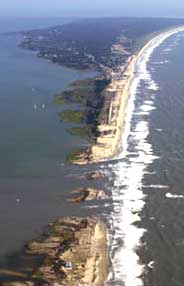
In the event of an imminent or catastrophic disaster around Buzzards Bay, Cape Cod, or Massachusetts, go to these sites:
Massachusetts Emergency Management Page
FEMA Hurricane Planning
Planning for disasters website.
FEMA’s Disasterassistance.gov
The Federal Disaster Management disaster information website.
Local Planning and Preparedness
Massachusetts hurricane evacuation zones
Current Storm Information
NOAA Marine Forecast for Buzzards Bay
Hazard Zone Forecast, New Bedford
Track Storms with this IR Moisture Map of the East Coast (updated hourly)
BUZM3 Buzzards Bay Buoy Conditions
NOAA coastal weather and wave forecast
Most Recent Satellite Map Virginia to Caribbean, Visible wavelengths (updated every half hour)
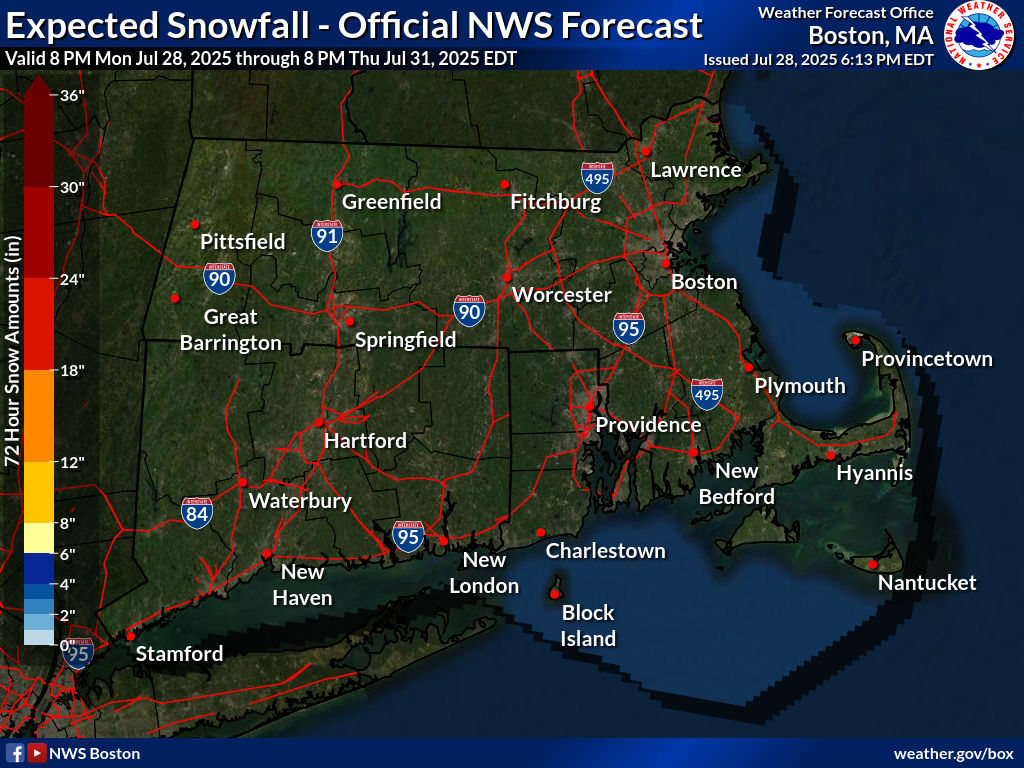 Winter snow accumulation forecast (click the map to go to NOAA site).
Winter snow accumulation forecast (click the map to go to NOAA site).
Watch effects of local storms on local NOAA weather buoys
You can watch the approach and effects of local storms on local sea conditions by following the links or studying the graphs below.
![]() Buzzards Bay Data Buoy BUZM3 wind and wave conditions, updated hourly
Buzzards Bay Data Buoy BUZM3 wind and wave conditions, updated hourly![]() Buzzards Bay Data Buoy 44070 wind and wave conditions, updated hourly
Buzzards Bay Data Buoy 44070 wind and wave conditions, updated hourly
Check also the Nantucket Buoy data for wave heights (graphs shown at bottom of this page).
Buoy 44008 (100 miles SE of Nantucket), wind and wave conditions, updated hourly
Recent Wave Amplitude Period and Wave Height (previous 5 days) at the SE of Nantucket Buoy:
Wave amplitude period is a good indicator of distant, severe storms. For example, during quiet periods, the period between wave swells may be 4 seconds, and wave heights 5 feet or less. However, when Nor’easters or hurricanes and other storms persist offshore, wave height, and the time between wave swell crests can increase dramatically, and will be shown on the graphs below.
Near Real Time Wave Period at buoy SE of Nantucket (long wave periods generally coincide with large offshore storms)
Hurricane Links
Army Corps Hurricane Surge (SLOSH) Maps and evacuation routes for Massachusetts Communities
NOAA’s archive of Hurricane Katrina Advisories
Woods Hole Short Term Tide Projections
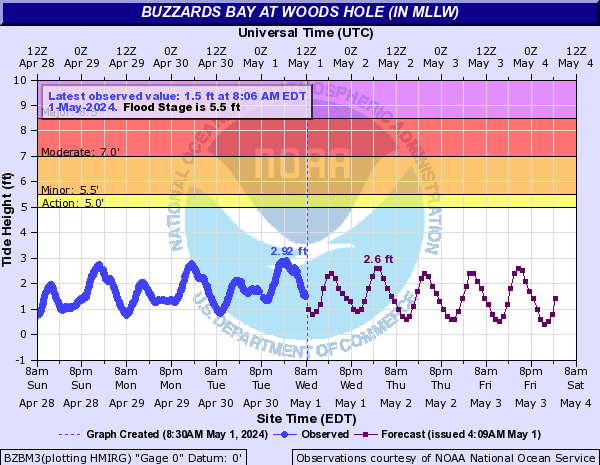
 NOAA Woods Hole Hydrograph current condition vs forecasted tide
NOAA Woods Hole Hydrograph current condition vs forecasted tide
Hurricane Preparedness Information
NOAA Brochures: Hurricane Basics and more
NOAA National Hurricane Center: Hurricane and Other Severe Weather Guides
NOAA National Weather Service: Hurricane Awareness
American Red Cross Hurricane Information Page
Historic Floods and Droughts in Massachusetts
Historic Floods in Massachusetts (pdf file).
Past Hurricanes Affecting Buzzards Bay
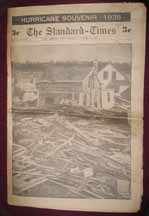
1938 “souvenir” newspaper issue by New Bedford Standard Times (10 MB pdf file). Great photos and accounts of the Hurricane of 1938 two weeks after the disaster. The Hurricane hit Buzzards Bay on September 21. Read also this well illustrated book, NEW ENGLAND HURRICANE (1938) (25 MB pdf).
Wikipedia summary of all hurricanes and tropical storms affecting New England.
Path of all Deadliest and Costliest Hurricanes in US
US Hurricane Strike Locations, 1950-2000
Great Hurricane of 1815
The Hurricane of 1815 was probably comparable in intensity to the Hurricane of 1938, or perhaps greater (Boldt et at, 2010; Marine Geology 275:127″139).
Brief 1816 Account of the Great Gale of 1815
This account, was published in 1816 by the Massachusetts Historical Society.
1847 summary of various accounts of the Great Gale of 1815
This account was published in an 1846 history of Rochester and Mattapoisett.
Environmental Management Issues associated with Storms and Sea Level Rise
Storms and high seas erode the coast and flood low-lying areas. In addition, since the last ice age 10,000 years ago, sea level has continued to rise. During recent centuries, relative sea level has risen an average of 1 foot per century on the east coast, and this rate of sea level rise is expected to increase with global warming. The combination of sea level rise and coastal erosion has changed many coastal areas in the US since European colonization of North America more than 400 years ago.
For environmental managers and regulators today, construction and development in storm flood zones, and areas of high erosion is an important concern, especially in terms of threats to human safety. Also important are the high public financial costs and economic impacts associated of replacing roads, loss of personal property, and public financing of flood insurance programs and emergency response, particularly in areas repeated damaged by storms. The links to the articles below discuss some of these public policy issues.
Massachusetts Office of Coastal Zone Management Shoreline Change Project.
National Assessment of Coastal Vulnerability to Sea-Level Rise (pdf file).
National Academy of Sciences: Sea Level Rise and Coastal Disasters (pdf file).
URI fact sheet on coastal Erosion.
Army Corps New Bedford Hurricane Barrier Tidal Data.
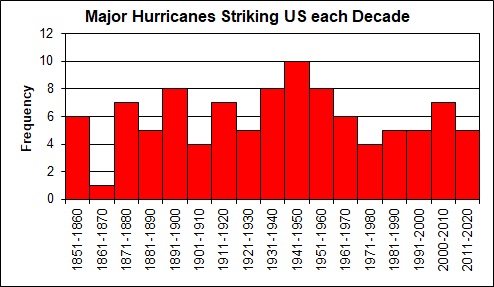
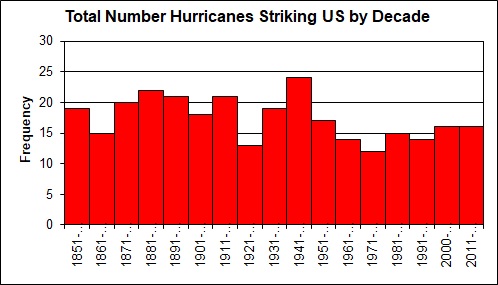
“Major” hurricane strikes (Categories 3 to 5) and total number of hurricane strikes in the US for each decade (data from NOAA), and supplemented from other sources. These counts are actual strikes of the mainland at hurricane force, at the Saffir–Simpson category at landfall. These are not numbers of named storms, and excludes offshore storms that may have affected coastal areas.
Other Links
NOAA web page on hurricane historical statistics and FAQs
NOAA Boston and Region Weather, updated hourly. [Best Gov. site, click on map where you live.]
Today’s Sea Conditions (from NOAA’s National Weather Service)